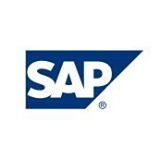 Earlier this week, I had the opportunity to meet with Kevin Gilroy, SAP’s Senior VP and GM for Global Small and Midsize Enterprise Segment & Indirect Channels to hear about SAP’s plans to go big in the small and medium business market, which SAP refers to as small and medium enterprises (SMEs). In a nutshell, the vendor is dramatically ramping up market, channel and solution initiatives to boost its profile and market share in SME.
Earlier this week, I had the opportunity to meet with Kevin Gilroy, SAP’s Senior VP and GM for Global Small and Midsize Enterprise Segment & Indirect Channels to hear about SAP’s plans to go big in the small and medium business market, which SAP refers to as small and medium enterprises (SMEs). In a nutshell, the vendor is dramatically ramping up market, channel and solution initiatives to boost its profile and market share in SME.
These initiatives come with an interesting twist. Much of what SAP intends to do in the SME space will focus on recruiting partners—from both developer and VAR ranks—who can provide start-up millennial businesses with next generation solutions to help them grow at lightening speed.
The company claims that it is coming at this from a position of strength, with 80% of its 253,000 customers coming from the SME ranks. But, SAP’s defines SMEs, as companies with revenues under $1 billion, which skews larger than how most vendors and analysts define it. So what shape will SAP’s new SME initiatives take?
Sharpening the SME Lens
 To put things in context, SAP’s courtship of SME isn’t new. As I discussed in Top SMB Takeaways: SAP Sapphire 2013, SAP has been sharpening its SME lens for a while. Last year, the vendor announced several new programs to bring the benefits of HANA’s data-crunching power to SMEs, provide customers with the choice of running its solutions in public, private or hybrid cloud environments, and to make its solutions easier to buy and use.
To put things in context, SAP’s courtship of SME isn’t new. As I discussed in Top SMB Takeaways: SAP Sapphire 2013, SAP has been sharpening its SME lens for a while. Last year, the vendor announced several new programs to bring the benefits of HANA’s data-crunching power to SMEs, provide customers with the choice of running its solutions in public, private or hybrid cloud environments, and to make its solutions easier to buy and use.
As I noted in that post, SAP was focusing these initiatives not at the SME masses, but on high-growth SMEs, which SMB Group call Progressive SMBs. Progressive SMBs are growth driven, and more likely to invest in and use technology to gain market and competitive advantage than other SMBs. Our data shows that Progressive SMBs are also much more likely to anticipate revenue gains than peers whose tech investments are flat or declining.
Now, SAP is further sharpening the lens to zero in on millennials that are starting, running and making decisions in SME companies. According to Gilroy, millenials have a different view on technology than older counterparts. They are more comfortable with technology, and more likely to view it as a growth engine, instead of as a cost-cutter.
With a broad portfolio of cloud, mobile, analytics, ecommerce, talent management and ERP solutions, SAP offers many entry points for these SMEs. The vendor has made some key acquisitions, including Ariba for ecommerce, and Success Factors for talent management, that broaden its footprint in the born on the cloud solution space. SAP has also introduced cloud-based options for many of its traditional on-premises solutions, such as SAP Business One. SMEs often prefer cloud solutions because they can usually be deployed faster, with less technical expertise and without big upfront capital expenditures, paving they way for SAP and its partners to expand their addressable market.
Furthermore, SAP is infusing HANA into its SME offerings, announcing general availability of the 9.0 version of the SAP® Business One application, version for SAP HANA. This is the first business management solution for SMEs running on SAP’s in-memory HANA computing platform. It enables SMEs to analyze structured and unstructured information within seconds instead of days, and use predictive analytics to gain new insights into data and optimize business decision-making.
Powering Up Partner Programs
 SAP is powering up partner recruitment to fuel SME expansion. The vendor recruited 500 partners in 2013, growing the partner base to more than 11,500 worldwide, with about 1,000 in the U.S. Gilroy indicated that SAP is planning for double-digit channel growth, but will take a selective recruiting tack. In addition to looking for partners with a next-generation development vision, such as Liquid Analytics, SAP wants partners that are ready to scale their businesses to keep pace with SAP’s double-digit growth in SME.
SAP is powering up partner recruitment to fuel SME expansion. The vendor recruited 500 partners in 2013, growing the partner base to more than 11,500 worldwide, with about 1,000 in the U.S. Gilroy indicated that SAP is planning for double-digit channel growth, but will take a selective recruiting tack. In addition to looking for partners with a next-generation development vision, such as Liquid Analytics, SAP wants partners that are ready to scale their businesses to keep pace with SAP’s double-digit growth in SME.
The vendor has introduced and refreshed several programs to help partners go to market more effectively, including:
- SAP Marketing University, a free, foundational marketing program to empower partners with the marketing skills they need to grow their businesses. SAP indicates the program has already led to over $1 billion in lead generation activities. Once partners have gone through the program, SAP provides them with the same marketing assets that are available to its internal marketing and sales teams.
- Partner involvement in SAP’s Run Like Never Before ad campaign, launched in October of 2013. To data, more than 200 partners have taken executed campaigns as part of this program, which is 100% MDF reimbursable.
- New “buy now, pay later” SME financing options that give SMEs zero-percent financing for up to 24 months for the purchase of any SAP product on the reseller price list.
Perspective
We’ve all seen how quickly innovative, fast-growth SMEs can become marquee brands, from tech sector stars such as LinkedIn to consumer brands such as Green Mountain coffee . SAP sees this too—and that technology is putting the creation-destruction cycle for businesses in hyper-drive.
So SAP’s big bet on becoming the leading IT solutions provider for these high-growth SMEs makes sense. As important, SAP is making an authentic effort to consumerize the SAP experience by reducing friction in choosing, buying and using SAP solutions.
But in this noisy SME space, crowded with competitors coveting the same high-growth SMEs, SAP still needs to do more to dispel the long-standing myth that SAP is only a big business brand. Although SAP solutions may be a good fit for high-growth SMEs, the vendor isn’t a household name with them or the millenials that its is seeking out.
SAP will also need to be cautious not to overplay the millennial hand. While millenials are likely to be more digitally savvy than older generations, the U.S. Small Business Administration says that self-employment among younger age groups has actually been dropping. From 2005 to 2010, self-employment among individuals age 25 and under decreased 19 percent, compared to a 7 percent drop in the overall population. In reality, self-employment rates increase with age. For example, they were 2 percent for those 25 and under and 23 percent for those 65 and over in 2010. Simply stated, while millenials may prove to apply technology in business in more innovative ways, they are a relatively small part of the entrepreneurial population.
However, SAP is moving in the right direction. As it increases its investment to understand and engage with SMEs, SAP can continue to fine-tune its SMB story, and widen the circle of high-growth SMEs that will hear it and relate to it.
